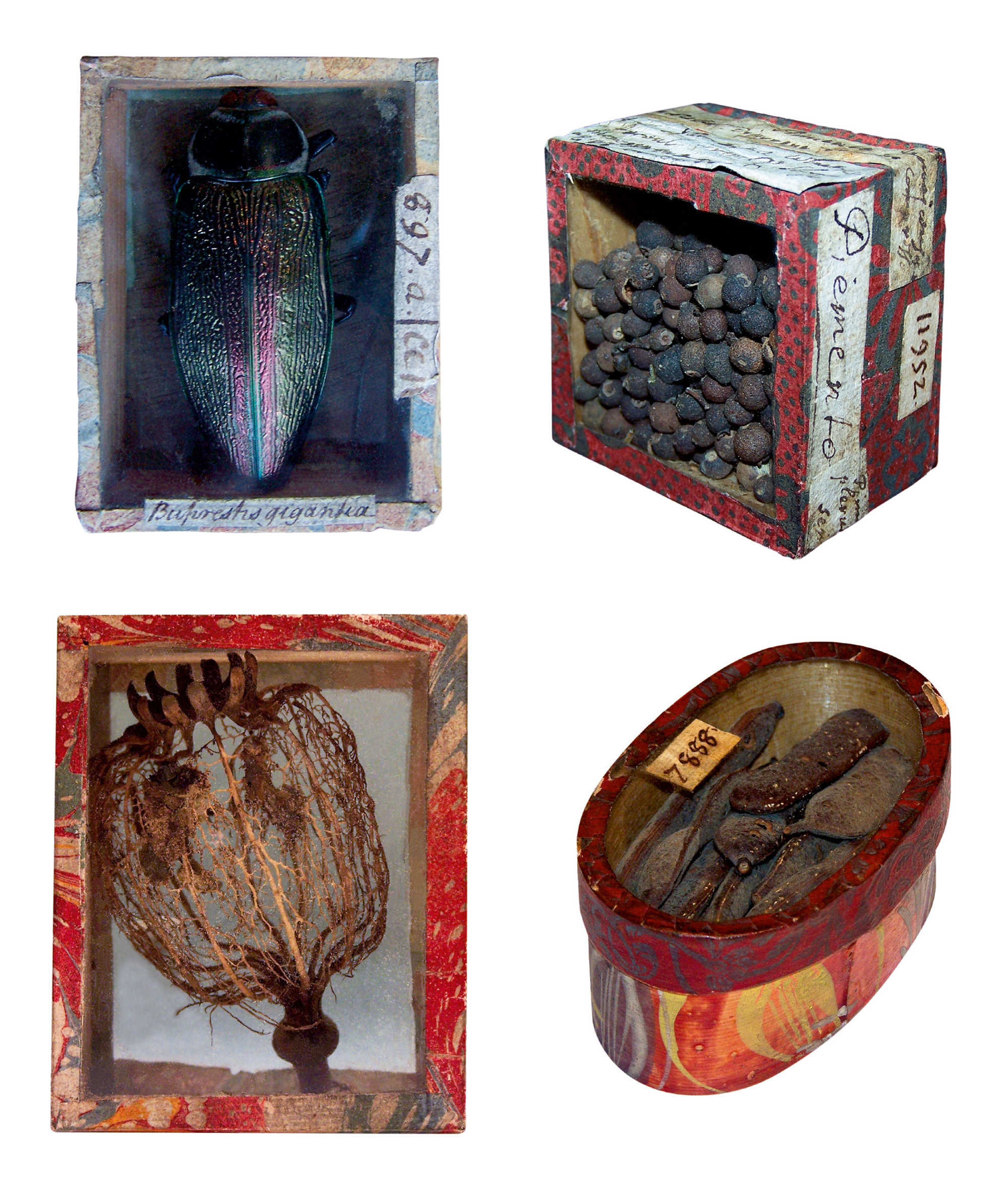What’s in the Box?
The time machines of Sir Hans Sloane
James Delbourgo
And yet Rilke has spoken of the pleasure he felt when he saw a box that closed well.
—Gaston Bachelard, The Poetics of Space
Gaston Bachelard, unlike the contemporary proverbial freethinker, was happy to think inside the box. His musings on spatial poetics notably include a meditation on drawers, chests, and wardrobes. “An anthology devoted to small boxes, such as chests and caskets,” he reflects, “would constitute an important chapter in psychology. These complex pieces that a craftsman creates are very evident witnesses of the need for secrecy, of an intuitive sense of hiding places.”[1] The locked casket or chest, secure from prying eyes and hands, is Bachelard’s archetype: what counts about a box is that it is opaque and inscrutable. It’s a chamber into which we cannot see. Boxes are synonymous with secrecy, and locks their crucial dualistic threshold: the way in for those with a key, the impassable barrier for those without. What a box fundamentally offers, then, is the event of its opening and the revelation of a hidden delight or, as with Poe’s doomed heroes, some unspeakable horror.
But what about boxes you can see into? And boxes that don’t open?

Consider the boxes featured in the photographs above. They are, like all boxes perhaps, a time machine. They are just a few of the thousands assembled by the encyclopedic collector Sir Hans Sloane (1660–1753), whose library, specimens, and artifacts the British Museum was created to house in 1759. Here is how Sloane’s boxes looked through the eyes of the Linnaean emissary Per Kalm, who described the spectacle of thousands of insect specimens, mounted in large drawers, filling many cabinets:
Each species or individual was laid in a rectangular box the bottom of which was wooden. But among them, some had both the cover and the bottom of the box made of a crystal-clear glass, while some had only a transparent glass lid. At the joints where the glass ran up to the sides of the box it was sealed tight with paper in such a way that no air let alone any moth or other insect could get inside to damage the contents.[2]
Accommodating nature in purpose-built furniture was central to the collector’s art. And this is precisely what dazzled Kalm. Forget the insects. It’s the boxes that enthralled the peripatetic Swede. The pleasure of these well-closed boxes frustrates Bachelard’s paradigm of unlocking, however, because they were designed never to open. Sloane’s art of boxing was paradoxically one of sealed openness: engineering a discrete physical space in which the specimen’s form would remain unchanged and available for repeated viewing. These miniature voyeuristic coffins, neatly entombed in the drawers of an entomological morgue, were tiny stages on which the naturalist acted out the drama of natural history as the virtuosic management of death. Turning living creatures into objects was the scientific pleasure, and power, of a box that closed well.